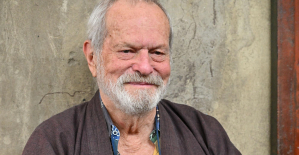European astronauts have been in space before, but only with Russian or American capsules. Although Europe ranks third in the world after the USA and China when it comes to spending on space travel, it has never sent people into space with its own European rocket. A gap in Europe's space travel. So far anyway – now it is supposed to be closed.
The aerospace company Ariane Group, a joint venture between Airbus and the French technology group Safran, has presented concrete plans for how astronauts could conquer space with European rockets. The concept, dubbed Susie (Smart Upper Stage for Innovative Exploration), recently unveiled at an International Space Congress (IAC) in Paris, is essentially a completely new rocket tip designed to accommodate up to five astronauts and/or cargo.
What makes it special is that it would be a reusable stage. The Ariane Group and Europe would thus take up the recycling idea pursued by technology entrepreneur Elon Musk at his space company SpaceX. Susie could even "pave the way for fully reusable European launch vehicles," the release said, though without giving a specific date.
Europe's space agency ESA has been considering its own manned space flight for some time. Last but not least, the break with Russia on space projects as a result of Putin's war of aggression in Ukraine accelerated the discussion. It is said that autonomous access to space for Europeans is of great importance.
In fact, however, the Susie concept with a manned ESA capsule is a revival of an old idea in a completely new packaging. Because Europe once wanted to develop the space glider Hermes. He was scheduled to lift off from the spaceport in French Guyana on top of an Ariane 5 rocket. A kind of space shuttle of the Europeans. After years of back and forth, the Hermes project was buried 30 years ago, mainly because of the high costs.
As a result, Europe has had to keep looking for ride-sharing opportunities and, more recently, has had to watch the space company SpaceX becoming the pacesetter in the industry, including in manned spaceflight. The reusable rocket upper stage for people and/or cargo presented by the Ariane Group in Paris still only exists on paper and in computer animations.
The stage could be operational from around 2030, explains a spokesman. No information has yet been given about the costs. But they should be in the billions, according to the industry. The Ariane Group, as a key company for Europe's construction of large launch vehicles, cleverly presented the proposal in the run-up to the so-called ESA Council of Ministers in November. There, politicians decide in which projects to invest. France and Germany are the largest ESA contributors.
The Austrian ESA Director General Josef Aschbacher has already spoken out in favor of entering manned space flight with one's own vehicle. But manned space travel costs billions, and there are other expensive large-scale European projects in space, such as building a bug-proof fleet of communications satellites.
Europe has already invested billions in autonomous access to space with the new Ariane 6 launch vehicle. After several delays, it is now scheduled to take off for the first time in 2023.
NASA also aborts the second launch attempt of the "Artemis I" mission. Actually, it should go towards the moon, but again a technical problem occurred. Prof. Ulrich Walter, astronaut and professor of space technology at the Technical University of Munich, talks about what that was and how things are going to continue.
Source: WORLD
The reusable Susie stage could then be mounted at its peak in the next decade. As the industry says, there would have to be a few security measures on Ariane 6 before it could transport people at all.
The Susie capsule would be designed in such a way that it could even be used for a successor generation of Ariane 6, i.e. a kind of modular design. The reusable capsule upper stage would be 12 meters long, five meters in diameter and weigh 25 tons. The relatively large cargo hold of 40 cubic meters is remarkable.
The range of uses for manned or fully automated missions would be very diverse. The release of satellites, the supply of space stations with fuel or food or even as a space taxi for the exchange of crews is mentioned. Susie could also be used to collect satellites at the end of their lives - and transport payloads weighing more than seven tons back to Earth.
In contrast to all other modern space capsules (Boeing's Starliner, SpaceX-Elon Musk's Crew Dragon, Lockheed Martin's Orion), the first manned ESA capsule is not supposed to float down on parachutes. Rather, recoil rockets are intended to slow down re-entry into the earth's atmosphere and then touch down gently on a landing pad.
This rocket braking idea with landing on the ground and not in the sea was originally planned by Elon Musk for his Dragon capsule, but then rejected after Nasa's security concerns. His new reusable mega-rocket upper stage Starship, which may start its first test flight later this year and will one day transport up to 100 astronauts, is also supposed to land without parachutes.
"Everything on shares" is the daily stock exchange shot from the WELT business editorial team. Every morning from 7 a.m. with our financial journalists. For stock market experts and beginners. Subscribe to the podcast on Spotify, Apple Podcast, Amazon Music and Deezer. Or directly via RSS feed.

 United States: divided on the question of presidential immunity, the Supreme Court offers respite to Trump
United States: divided on the question of presidential immunity, the Supreme Court offers respite to Trump Maurizio Molinari: “the Scurati affair, a European injury”
Maurizio Molinari: “the Scurati affair, a European injury” Hamas-Israel war: US begins construction of pier in Gaza
Hamas-Israel war: US begins construction of pier in Gaza Israel prepares to attack Rafah
Israel prepares to attack Rafah First three cases of “native” cholera confirmed in Mayotte
First three cases of “native” cholera confirmed in Mayotte Meningitis: compulsory vaccination for babies will be extended in 2025
Meningitis: compulsory vaccination for babies will be extended in 2025 Spain is the country in the European Union with the most overqualified workers for their jobs
Spain is the country in the European Union with the most overqualified workers for their jobs Parvovirus alert, the “fifth disease” of children which has already caused the death of five babies in 2024
Parvovirus alert, the “fifth disease” of children which has already caused the death of five babies in 2024 Falling wings of the Moulin Rouge: who will pay for the repairs?
Falling wings of the Moulin Rouge: who will pay for the repairs? “You don’t sell a company like that”: Roland Lescure “annoyed” by the prospect of a sale of Biogaran
“You don’t sell a company like that”: Roland Lescure “annoyed” by the prospect of a sale of Biogaran Insults, threats of suicide, violence... Attacks by France Travail agents will continue to soar in 2023
Insults, threats of suicide, violence... Attacks by France Travail agents will continue to soar in 2023 TotalEnergies boss plans primary listing in New York
TotalEnergies boss plans primary listing in New York La Pléiade arrives... in Pléiade
La Pléiade arrives... in Pléiade In Japan, an animation studio bets on its creators suffering from autism spectrum disorders
In Japan, an animation studio bets on its creators suffering from autism spectrum disorders Terry Gilliam, hero of the Annecy Festival, with Vice-Versa 2 and Garfield
Terry Gilliam, hero of the Annecy Festival, with Vice-Versa 2 and Garfield François Hollande, Stéphane Bern and Amélie Nothomb, heroes of one evening on the beach of the Cannes Film Festival
François Hollande, Stéphane Bern and Amélie Nothomb, heroes of one evening on the beach of the Cannes Film Festival Skoda Kodiaq 2024: a 'beast' plug-in hybrid SUV
Skoda Kodiaq 2024: a 'beast' plug-in hybrid SUV Tesla launches a new Model Y with 600 km of autonomy at a "more accessible price"
Tesla launches a new Model Y with 600 km of autonomy at a "more accessible price" The 10 best-selling cars in March 2024 in Spain: sales fall due to Easter
The 10 best-selling cars in March 2024 in Spain: sales fall due to Easter A private jet company buys more than 100 flying cars
A private jet company buys more than 100 flying cars This is how housing prices have changed in Spain in the last decade
This is how housing prices have changed in Spain in the last decade The home mortgage firm drops 10% in January and interest soars to 3.46%
The home mortgage firm drops 10% in January and interest soars to 3.46% The jewel of the Rocío de Nagüeles urbanization: a dream villa in Marbella
The jewel of the Rocío de Nagüeles urbanization: a dream villa in Marbella Rental prices grow by 7.3% in February: where does it go up and where does it go down?
Rental prices grow by 7.3% in February: where does it go up and where does it go down? Even on a mission for NATO, the Charles-de-Gaulle remains under French control, Lecornu responds to Mélenchon
Even on a mission for NATO, the Charles-de-Gaulle remains under French control, Lecornu responds to Mélenchon “Deadly Europe”, “economic decline”, immigration… What to remember from Emmanuel Macron’s speech at the Sorbonne
“Deadly Europe”, “economic decline”, immigration… What to remember from Emmanuel Macron’s speech at the Sorbonne Sale of Biogaran: The Republicans write to Emmanuel Macron
Sale of Biogaran: The Republicans write to Emmanuel Macron Europeans: “All those who claim that we don’t need Europe are liars”, criticizes Bayrou
Europeans: “All those who claim that we don’t need Europe are liars”, criticizes Bayrou These French cities that will boycott the World Cup in Qatar
These French cities that will boycott the World Cup in Qatar Medicine, family of athletes, New Zealand…, discovering Manae Feleu, the captain of the Bleues
Medicine, family of athletes, New Zealand…, discovering Manae Feleu, the captain of the Bleues Football: OM wants to extend Leonardo Balerdi
Football: OM wants to extend Leonardo Balerdi Six Nations F: France-England shatters the attendance record for women’s rugby in France
Six Nations F: France-England shatters the attendance record for women’s rugby in France Judo: eliminated in the 2nd round of the European Championships, Alpha Djalo in full doubt
Judo: eliminated in the 2nd round of the European Championships, Alpha Djalo in full doubt


















